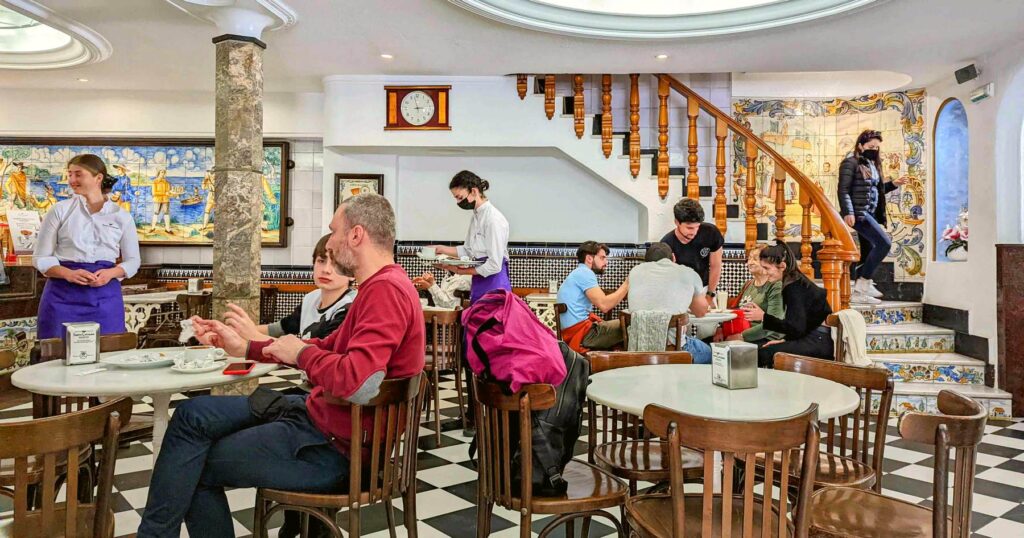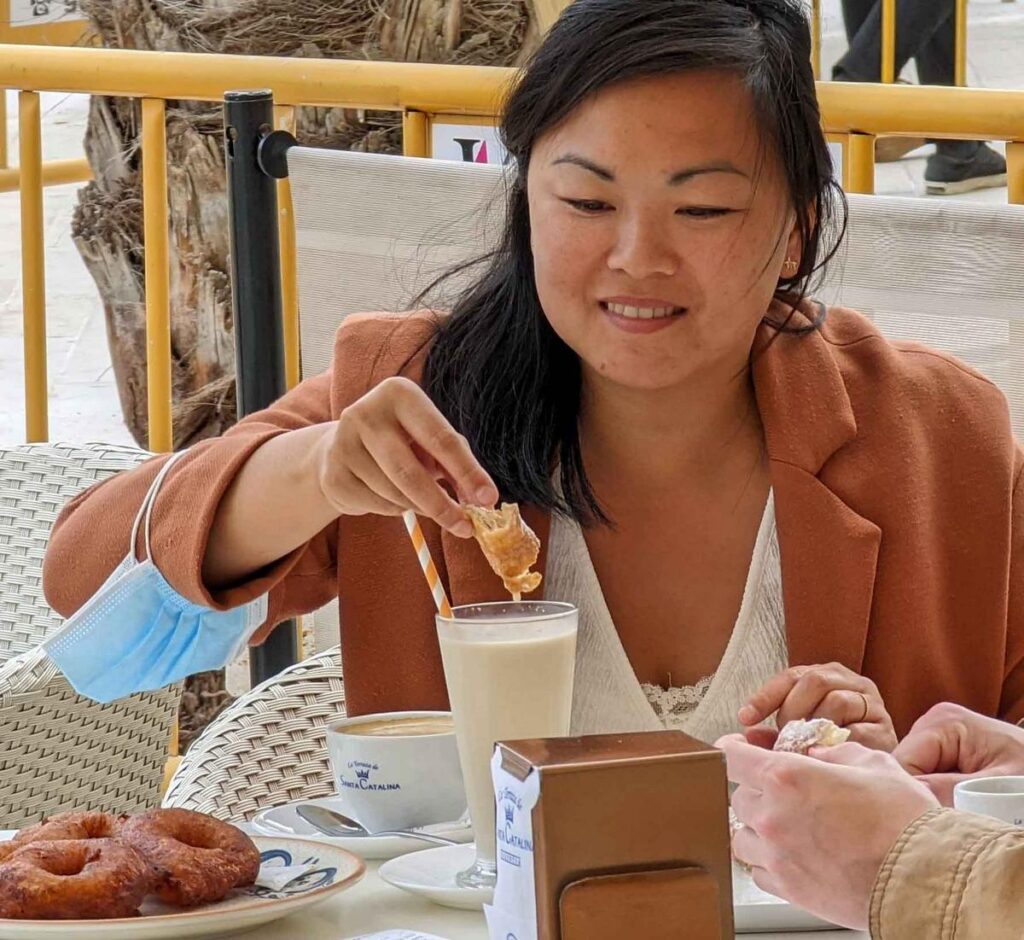
Valencia is famous for more than its rice dishes. Locals have been making a milky drink from the tiny tubers of Cyperus esculentus since the 13th century. Deeply chilled, it’s the perfect refreshment on a warm day. The tubers are often tiger nuts because they’re striped and have a hard shell. In Spanish, they’re chufa and properly speaking, the vegan milk made from them is horchata de chufa.
No one in Valencia bothers with such distinctions. The drink is horchata or orxata, pronounced the same despite the difference between Castellano and Valenciano spellings. The center of chufa cultivation is Alboraya, a marshy section of Valencia that was once its own town. You can buy tiger nuts on the street or in any public market, but we suspect few locals bother to make the drink at home. Why bother when you can buy bottled horchata in the grocery store or stop for a quick glass from a cart at almost any busy street corner?
Enjoying a social drink in a horchatería

Best of all is sitting at a table in a horchatería to sip the ice-cold, slightly nutty beverage while devouring a farton. Comical as the pastry may sound, it’s basically a churro on steroids — a big tubular donut for dipping into your drink.
The horchaterías tend to be elaborately decorated. For our money, the most gorgeous of the lot is Santa Catalina (Plaça de Santa Caterina, 6; +34 963 91 23 79; horchateriasantacatalina.com) near the cathedral. It’s set back a bit from the Plaça de Virgen, although they do have a terrace with sidewalk service on that busy plaza. We prefer the interior of the original, which celebrates two centuries of making and serving horchata. The checkerboard floor tiles contrast with blue-and-white ceramic scenes on the walls created in the nearby ceramics town of Manises. The dazzling array of pattern is quintessentially Spanish. The horchata is pretty good, too.
